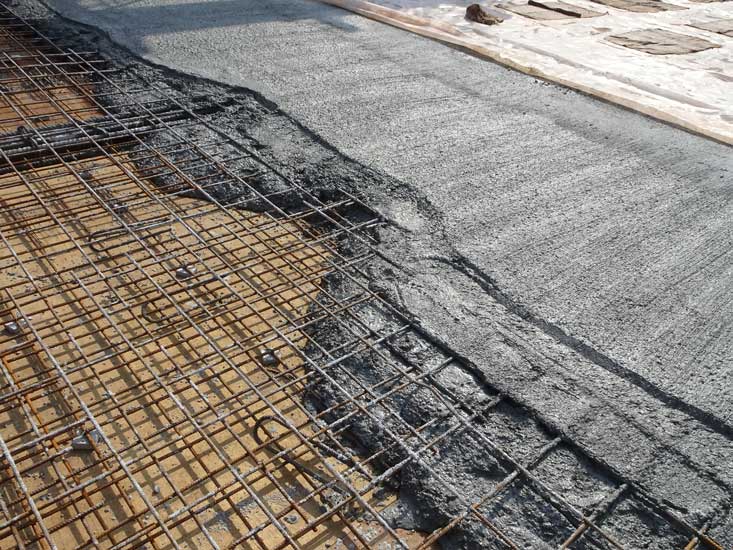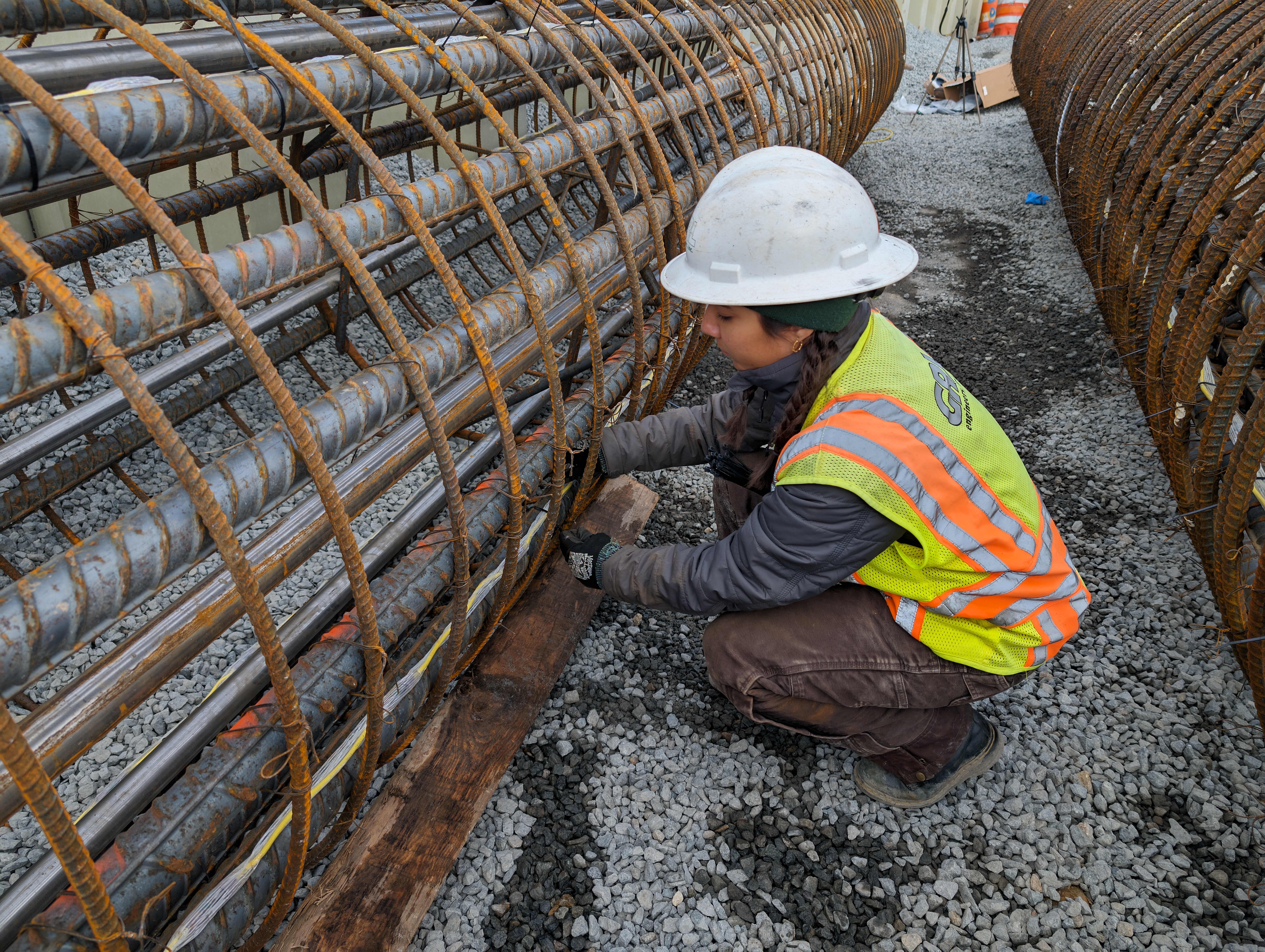West Coast General Engineering industrial concrete Rancho Cucamonga: Key Insights Before You Build
The Necessary Duty of Concrete Structure in Structural Honesty and Longevity
When it comes to building a building, the structure is more crucial than you might believe. Concrete foundations offer unrivaled stamina and toughness, guaranteeing your framework can hold up against numerous ecological obstacles. Without a strong base, you run the risk of prospective issues like shifting or breaking, which can jeopardize safety and value. Understanding the subtleties of concrete structures can be the trick to maintaining your financial investment for several years to find. What should you take into consideration next?
Understanding the Importance of Concrete Foundations
Concrete structures are vital to the total security of any kind of framework, as they provide the essential assistance needed to withstand numerous tons and environmental problems. When you consider constructing a home or an industrial space, the structure is the first point you must consider. It acts as an obstacle against wetness, safeguarding your residential property from water damage. A well-placed concrete structure likewise protects against settling and changing, which can result in splits in walls and floorings. You'll intend to guarantee that the foundation is properly created and reinforced, as this impacts the long life of your building. In addition, a solid structure can enhance energy effectiveness by reducing air leakages. Bear in mind, ignoring the significance of a concrete structure can bring about expensive repair services down the line. So, investing in a high quality structure upfront is important for the stability and resilience of your framework.
Advantages of Concrete Foundations for Structural Honesty
While many aspects add to a structure's structural integrity, concrete foundations use unmatched sturdiness and stamina. You'll value that concrete can withstand extreme climate condition, standing up to both dampness and temperature level fluctuations. This resilience suggests your framework is much less most likely to experience fracturing or changing over time, which can compromise its safety.Additionally, concrete's inherent weight supplies a strong base, preventing activity throughout natural events like quakes or floodings. When you pick a concrete structure, you're additionally going with reduced maintenance; unlike wood, it won't rot or draw in insects, saving you time and money in repairs.Moreover, concrete's fire resistance provides added safety, guaranteeing your framework can withstand high temperature levels without significant damage. In general, buying a concrete structure indicates you're prioritizing the long-term security and stability of your building, making it a sensible option for any type of construction project.
Usual Kinds Of Concrete Foundations
When it pertains to building structures, comprehending the usual kinds of concrete structures can help you make notified selections for your task. One of the most widespread types include slab-on-grade, crawl space, and complete cellar foundations.A slab-on-grade foundation is an easy, cost-effective alternative, where a thick concrete slab is put straight on the ground. This type functions well in warm climates, as it lessens warm loss.Crawl room foundations elevate the home a little over ground, enabling ventilation and accessibility to plumbing and electric systems. This design can aid stop moisture issues.Full cellar structures supply extra living or storage room while supplying outstanding architectural support. They need more excavation and are commonly utilized in cooler climates to stop frost heave.
Variables to Think About When Creating a Concrete Foundation

Ideal Practices for Installing Concrete Foundations
When you're setting up a concrete structure, appropriate website preparation is necessary to ensure security (West Coast General Engineering commercial concrete). You'll likewise require to understand reinforcement methods to boost toughness and longevity. Finally, don't forget the curing process, as it plays an essential function in attaining a strong foundation
Website Prep Work Importance
It may appear uncomplicated, appropriate site preparation is vital for assuring a strong and resilient concrete foundation. Begin by removing the area of any particles, plants, or natural material that could endanger the structure's stability. Next, evaluate the dirt type and compaction; you could require to dig deep into or include products to create a stable base. Level the ground to guarantee even weight distribution and stay clear of resolving problems later on. Mounting appropriate drain systems is likewise important to protect against water accumulation, which can damage the structure with time. Mark out the structure's dimensions precisely to lead the putting process. By following these steps, you'll establish the stage for an effective concrete foundation that stands the examination of time.
Support Methods Clarified
When the website is appropriately prepared, the next action in assuring a durable concrete foundation involves implementing effective support strategies. You should begin by making use of steel rebar, which offers tensile stamina and aids stop fracturing. Lay the rebar in a grid pattern, ensuring it rises using spacers to keep appropriate protection. Additionally, consider utilizing cable mesh for added support, particularly in areas based on heavy tons. Do not fail to remember to link the rebar junctions safely with wire. For larger foundations, fiber support can enhance longevity, reducing the danger of shrinking splits. Always comply with local building ordinance and standards to make certain compliance. By using these reinforcement techniques, you'll considerably increase your structure's toughness and long life, laying a strong groundwork for your structure.
Curing Process Fundamentals
To assure your concrete foundation remedies properly, it is necessary to keep adequate wetness and temperature problems immediately after pouring. Beginning by covering the surface area with a damp burlap or plastic bed linen to retain wetness. This maintains the concrete moisturized, avoiding fractures and making sure toughness. You ought to likewise keep track of the temperature level; perfect healing conditions are between 50 ° F and 90 ° F. If it's too hot, haze the surface routinely to stop quick dissipation. For cool weather condition, think about using protecting blankets to maintain heat. Go more info for a treating duration of at least 7 days, as this is essential for optimum toughness advancement. By complying with these best practices, you'll enhance your structure's longevity and durability, making sure architectural stability for years to come.
Upkeep of Concrete Structures for Longevity
To maintain your concrete structure solid and long-term, routine assessments are vital. You should likewise ensure efficient drainage services remain in place to avoid water damage. If you detect any kind of cracks, resolving them quickly will conserve you from larger issues down the line.

Routine Inspections and Evaluations
While routine examinations and evaluations may appear like a chore, they're crucial for preserving the integrity of your concrete structure. By consistently inspecting for cracks, changes, or signs of wear, you can catch prospective concerns before they escalate right into pricey repair services. Try to find any water pooling around the structure or uncommon settling, as these can signal underlying issues. It's likewise important to keep track of any type of changes in your home's framework, like doors that stick or windows that do not open smoothly. Keeping a document of your assessments helps track adjustments with time, permitting aggressive upkeep. Inevitably, these evaluations assure your structure remains secure, supporting the longevity and safety of your entire structure. Do not neglect this important element of homeownership!
Efficient Water Drainage Solutions
Routine examinations can expose problems like water drainage problems that may jeopardize your concrete foundation's security. To stop water buildup, guarantee your gutters and downspouts straight water away from the foundation. Installing French drains pipes can successfully redirect surface and groundwater, reducing stress on your foundation wall surfaces. In addition, grading the soil around your home helps assure that water flows away, instead of merging near your foundation.Consider utilizing sump pumps in locations vulnerable to flooding, as they proactively remove excess water. On a regular basis inspect for clogs in water drainage systems and clear them quickly. You'll safeguard your structure's integrity and durability by taking these positive steps. Bear in mind, effective drain options are vital for preserving a solid, long lasting concrete foundation.
Trigger Fracture Services
When you see cracks in your concrete foundation, resolving them without delay is necessary for keeping its long life. Tiny splits can swiftly progress right into bigger concerns, endangering the structural stability of your home. Consistently examine your structure for indicators of damage, such as horizontal or upright splits. If you identify any kind of, do not wait-- fix them right away. You can make use of epoxy shots or concrete patching compounds, which work for securing cracks. Constantly follow the supplier's guidelines and take into consideration speaking with a specialist for substantial damage. Remember, prompt repair services not just boost your foundation's resilience but also conserve you money in the future by avoiding more substantial repair work down the line. Remain proactive, and your foundation will stay strong and protected.
Attending To Common Concerns With Concrete Structures
Concrete structures can encounter numerous problems with time, making it important to recognize and address them immediately. Among the most usual issues is fracturing, which can happen as a result of temperature changes or settling soil. If you see splits, it's essential to examine their dimension and depth; tiny cracks can frequently be sealed, while bigger ones might need specialist evaluation.Water breach is an additional significant problem. Excess dampness can result in mold development and architectural deterioration. Assurance proper water drainage around your structure to reduce this threat. In addition, try to find indicators of changing or bowing wall surfaces, as this can suggest underlying concerns with your foundation's stability.Regular inspections are essential to capture these issues early. If you identify any worrying indications, don't hesitate to speak with a structure specialist. By staying positive, you can keep the stability and durability of your concrete structure, guaranteeing your home remains risk-free and protected.
Frequently Asked Concerns
Just How Does Soil Kind Influence Concrete Structure Performance?
Soil kind greatly impacts concrete foundation performance. If you've obtained large clay, for example, it can cause shifting and cracking. Sandy soil could cause clearing up. Recognizing your soil helps guarantee a steady structure.
Can Concrete Foundations Be Repaired if Harmed?
Yes, you can repair damaged concrete structures. Depending on the level of the damage, techniques like epoxy shot or piece jacking can bring back stability. It's ideal to get in touch with a professional for efficient solutions.
What Is the Common Life Expectancy of a Concrete Structure?
A concrete foundation usually lasts 30 to 100 years, depending on aspects like soil problems, climate, and upkeep. You'll wish to maintain an eye on it to guarantee it remains healthy throughout its life expectancy.
Exist Option Products to Concrete for Foundations?
Yes, there are options to concrete for structures, like steel, hardwood, or also recycled products. Each alternative has one-of-a-kind advantages and downsides, so you need to consider your task's specific demands when picking the ideal product.
Just How Does Environment Impact Concrete Structure Durability?
Climate significantly influences concrete structure resilience (West Coast General Engineering commercial concrete). Extreme temperature levels, wetness, and freeze-thaw cycles can deteriorate the material, resulting in cracks and architectural problems. You must think about neighborhood climate problems when planning your foundation to assure lasting performance